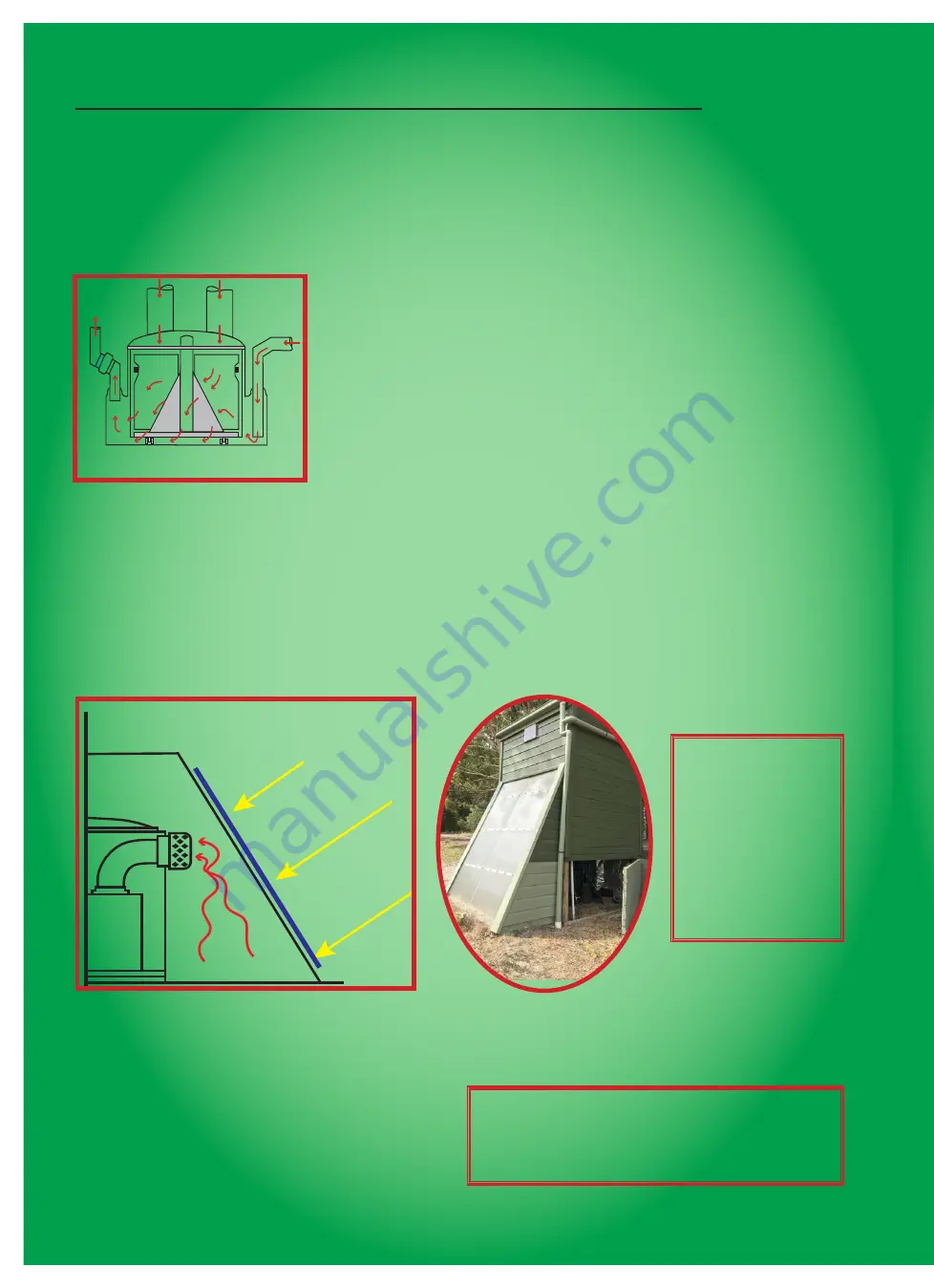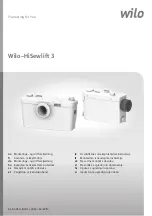
Page 3
HOW ROTA-LOO WORKS AND ENSURES EFFICIENT COMPOSTING
Rota-Loo deals with human waste using natural aerobic (requires oxygen) composting turning it to
Humus, a soil like fertiliser which can be easily disposed of. This is achieved by keeping the composting
pile dry and air circulating to provide the necessary oxygen.
The RL2000 has 8 large buckets sitting on a turntable in the Rota-Loo. Waste falls into the bucket(s)
positioned directly below the toilet pedestal(s) which allow liquids to drain away into the base. Excess
liquid may be drained away into a secondary system (see page 11). It may be worth considering including
a waterless urinal in some installations to divert some liquid away from the solids pile.
12 months. In the case of very high usage, where buckets may be rotated for use before composting is
complete, additional buckets can be supplied to allow for further composting time. Heat for composting
is generated by the bacterial activity. Retaining the heat available is important and adding extra heat will
assist the process. Using good insulation within the structure and passive solar heat are both important
methods to create and retain internal warmth.
Typical air flow through the chamber
An air-warm airflow is promoted by a continuously running fan drawing
air through a vent pipe heated by solar radiation, which both dries the
composting solids and provides oxygen for the aerobic process. The fan
also ensures airflow down the pedestal creating negative pressure and
controlling any odours that may occur.
When the bucket is full it is rotated within the chamber where it stays
promoting a good composting environment. Upon full rotation, bringing
the original bucket back (rotation brings it back to the pedestal),
composting should be complete and the Humus can be disposed of.
Composting time is dependent on the pile temperature, but it is generally
recommended that each bucket should stay in the Rota-Loo for at least
The design of the Rota-Loo provides a natural air-gap insulation around the bins. It is recommended that
the Rota-Loo is installed in an insulated space to help retain heat - this is particularly important in cold
climates where temperatures are regularly below 10°C. Placing the Rota-Loo in a sun-facing position and/
or in a Soltran module will improve operation.
A significant amount of heat is lost in the airflow system, so a Rota-Loo installation requirement is that
the inlet air is drawn from a warm air area, preferably through piping that acts as a solar collector (being
placed in a sunny location and painted black are the simplest methods).
When a composted bin has rotated through the
Rota-Loo chamber, it will be ready to empty
before filling again. If all has been operating
well, the result will be a soil like Humus compost
which can be used as a fertiliser in the garden.
The Soltran Principal
Clear sheeting is angled at
60 degrees with the largest
surface preferably facing
north. The rays of the sun
heats up the cool air inside,
the warm air is drawn into
the Rota-Loo by the fan
in the vent pipe. The front
of the Soltran can also be
used as the access door to
the Rota-Loo room.
State Regulations often stipulate the disposal methods of composted
waste from a compostable toilet. Please check with your local
authority. Typically in Australia, authorities require that humus from
a composting toilet be buried with 300mm of soil on top and in a
location that is not intended to be used for food cultivation for three
months.




























